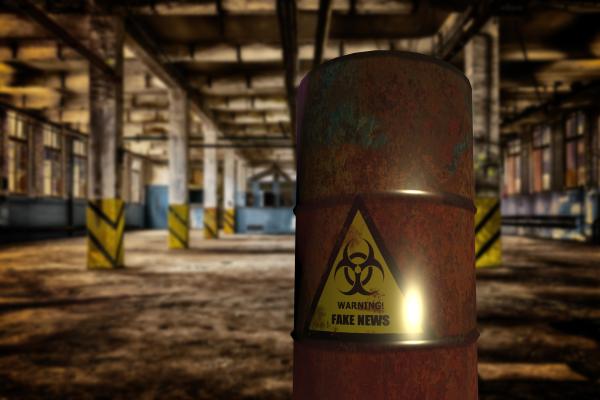When fact-checkers keep everybody honest, they play an important role in our public discourse. Sadly, they have done nothing of the sort during this pandemic, serving more as apologists for the CDC and other federal agencies than referees who correct false information no matter where it comes from.
As I've argued previously, this sort of slanted fact-checking has crippled the public's trust in mainstream science. To many Americans, the phrase “according to fact-checkers” now means “don't believe your lying eyes, biased reporters warn.” Here's a recent example from The Annenberg Public Policy Center's COVID-19/Vaccination Project: Misinformation About Face Masks.
The article was an extensive defense of the federal government's contradictory statements about the efficacy of masks. To many people, the erratic guidance offered by public health officials and amplified by the media looked like politically motivated theater that was often at odds with the evidence.
But those suspicions were mistaken, SciCheck argued. You see, silly rubes, the confusing masking guidelines were always based on the “evolution of the science,” as Dr. Anthony Fauci put it. Your faithful public servants at the CDC weren't overly risk-averse or driven by politics; no, they were just following the evidence wherever it went.
This is the sort of rhetoric you might expect from the White House Press Office, but it's totally unacceptable coming from a website that bills itself as a “nonpartisan, nonprofit 'consumer advocate.'” SciCheck's quotes are followed by my commentary unless otherwise stated.
Initially, there was limited evidence to support broad masking policies for the general public … On April 3, 2020, the CDC reversed course and recommended that everyone wear face coverings in public, citing new data that showed a 'significant portion' of people infected with the coronavirus lack symptoms but can spread the virus to others.
Absolutely nothing changed about the efficacy of masks between February and April 2020. The CDC may have developed concerns about asymptomatic infection, but the agency didn't uncover new data showing that universal masking would blunt viral transmission any better than it had in years past. Indeed, such evidence was "scarce," as a March 2020 Lancet Respiratory Medicine article pointed out.
The first major article synthesizing the evidence on masking was a World Health Organization-sponsored systematic review and meta-analysis published in June 2020, two months after the CDC's first about-face on masks. The review authors themselves pointed this out:
Our findings are, to the best of our knowledge, the first to rapidly synthesize all direct information on COVID-19 and, therefore, provide the best available evidence to inform optimum use of three common and simple interventions [Physical distancing, face masks, and eye protection] ...
SciCheck subtly conceded this point in a March 2021 article, writing that “In our last deep dive into the research on masks in April 2020, we explained that … direct evidence that face masks prevent transmission of respiratory viruses in a community was limited.” Equally telling was the website's explanation in the August 13 fact-check:
Since [April 2020], a growing body of evidence supports the use of masks to slow the spread of COVID-19, as we reported in March.
In other words, the research followed CDC's changing masking recommendations. But this was still an inaccurate summary of how the situation unfolded. Much of the masking research conducted throughout 2020 and into this year consisted of literature reviews and meta-analyses of studies performed during past flu seasons—that is, before April 2020—all of which concluded that the evidence was mixed and masks had limited impact on viral transmission.
The problems were manifold. Epidemiological studies had no way to decouple the effects of masking from other interventions, for example. One of the clinical trials CDC cited in support of masks probably enrolled 130 people who were vaccinated against influenza and classified them as flu cases. Two other studies had no control group; another found "a 13 times higher risk of infection in the cloth mask arm" compared to medical masks. Some of the results didn't even reach statistical significance.
Many COVID-specific observational and laboratory studies were performed as the pandemic proceeded, but these weren't particularly strong either, as Nature reported in October 2020:
For now, [Michael Osterholm, director of the Center for Infectious Disease Research and Policy at the University of Minnesota], wears a mask. Yet he laments the 'lack of scientific rigor' that has so far been brought to the topic. 'We criticize people all the time in the science world for making statements without any data,' he says. 'We’re doing a lot of the same thing here.'
In sum, the data were still very messy eight months into the pandemic. SciCheck complained that misinformation peddlers used this "evolving science" to distort the facts at every turn. But looking carefully at the research, it seems that the CDC's critics and many experts were making the same observations—and still are. Consider this June 2021 study published in Science:
Compared with N95 or FFP2 respirators, which have very low particle penetration rates (~5%), surgical and similar masks exhibit higher and more variable penetration rates (~30 to 70%). Given the large number of particles emitted upon respiration and especially upon sneezing or coughing, the number of respiratory particles that may penetrate masks is substantial, which is one of the main reasons for doubts about their efficacy in preventing infections.
Moreover, randomized clinical trials have shown inconsistent or inconclusive results, with some studies reporting only a marginal benefit or no effect of mask use. Thus, surgical and similar masks are often considered to be ineffective. On the other hand, observational data show that regions or facilities with a higher percentage of the population wearing masks have better control of COVID-19.
Acknowledging uncertainty is the best policy
As I wrote previously, the point is not that face coverings are useless. When my unvaccinated family visited my newborn son, I made them mask up; some protection is better than none. But we need to be honest about the quality of the research that's been done and how conservative its conclusions have been. Chastising people for ignoring the evidence while obscuring crucial limitations surrounding much of that evidence is misleading and disingenuous.
The irony in all this is that the public appreciates experts who acknowledge uncertainty where it exists. “Say what you know; what you don’t know; what you are doing to find out; what people can do in the meantime to be on the safe side, and that advice will change,” a team of researchers wrote last November in Nature. The constant onslaught of condescending fact-checks suggests that the media hasn't grasped this basic rule of science communication.




